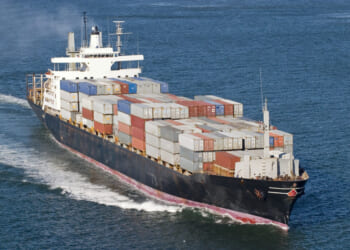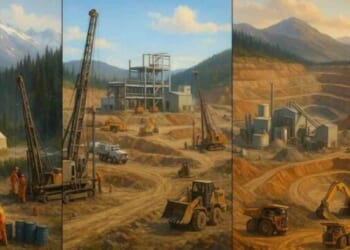Hiroshima. Chernobyl. Nagasaki. Fukushima. They’re practically household names at this point. As such, most people know that the consequences of the radioactive fallout spread far beyond the borders of these towns and cities. What you may not realize, however, is just how far.
In some cases, the consequences might seem trivial. Take, for example, the lack of salad greens throughout France for months following the Chernobyl disaster.
Meanwhile, the black rain following the atomic blasts at Hiroshima and Nagasaki, were clearly devastating.
In this regard, radioactive fallout can be elusive—taking a ruinous toll on some, while others are left seemingly untouched.
Either way, the most important point to remember is that fallout is the inevitable result of practically any major nuclear event. It doesn’t matter whether you’re talking about a meltdown at one of the world’s 450 active nuclear facilities, a terrorist attack with a dirty bomb, or full-scale nuclear war: fallout will be a fact of life for anyone in the surrounding area.
The silver lining? Radioactive fallout isn’t nearly as instantaneous, destructive, and unpredictable as a nuclear blast or meltdown. Indeed, it is something that you can prepare for—something you can work around and navigate your way through.
So in this post, we’re going to take a deeper look at the nature of nuclear fallout and delve a bit deep into the chances of surviving a nuclear attack.
This means we’re going to look at the science behind it, the basics of how fallout works, the situations that can arise, and the challenges you may face in the event of a nuclear disaster.
We will also pay close attention to prevailing wind patterns and geography, allowing us to gauge how much radioactive fallout you would potentially be exposed to during a nuclear attack or disaster.
Table of Contents
- 01Understanding Fallout and its Effects
- 02How to Survive the First 72 Hours After an Attack
- 03Time after Nuclear Attack
- 04Having a Safe Distance
- 05Shield from Radiation
- 06Decay from Nuclear Explosion
- 07Seek Shelter Indoors and Stay Inside, Away from Windows
- 08Remain Calm in the Event of a Nuclear Disaster or Radiation Emergencies
- 09Prepare for the Worst
- 010Knowledge is Power
- 011Frequently Asked Questions
And perhaps most importantly, we’re going to touch on a few basic things that you can easily do in order to prepare for—and ultimately survive—short-term exposure to nuclear fallout as you make your way to safety.
For the roughly 100 million Americans living within the fallout zone of an active nuclear reactor, this could be an important read.
So let’s get started…
As the name clearly implies, the definition of nuclear fallout is any residual radioactive material that falls out of the sky in the aftermath of a nuclear blast, meltdown or other critical event. If that sounds like common sense, it’s because it is.
What few people appreciate, however, is the true magnitude of nuclear events—or the massive amounts of toxic fallout they can produce. After all, there are a few key things that nuclear bombs and meltdowns both do exceptionally well:
Pulverizing
Pulverizing matter over a wide area, nuclear events can create a tremendous amount of debris, ash, and particulates. These rapidly increase exposure for those in the immediate area—where the highest concentrations of fallout and radiation can be found. In a subterranean explosion, called a “base surge,” this phenomenon is even more pronounced—with an effect akin to that of an active volcano.
Irradiating
Nuclear events irradiate this pulverized material, creating an unintentional but extremely toxic concentration of debris, dust, ash, and fallout—all while local residents are most likely seeking medical attention or escape.
Propelling
Finally, nuclear events propel the radioactive material into the stratosphere. In fact, in some cases, nuclear events can contaminate entire wind patterns with high concentrations of irradiated fallout. That’s how these events have lasting—albeit milder—effects hundreds or thousands of miles away.
These forces work together to produce a synergistic effect that maximizes victims’ exposure to toxic elements. Ergo, even and especially those who survive the initial blast can expect to face an absolute nightmare situation in terms of exposure to radiation.
When it comes to determining the extent and volume of fallout following any particular nuclear event, there are two key factors to consider.
First, there’s the location of the explosion. If it’s an airburst, then comparatively little fallout will be produced (but there will be a substantial EMP wave). However, if it’s a surface explosion, material will actually be pulled up into the nuclear cloud and irradiated before it’s carried along the plume into the upper atmosphere.
Consequently, you might think an explosion over water would be more favorable—but that’s just not the case.
You see, the explosion evaporates water and irradiates the remaining sea salt, producing much finer and smaller radioactive particles that can spread across a much larger area. This fallout can then seed clouds and rain back down on cities hundreds or even thousands of miles away.
And it goes without saying that this fallout won’t simply wash off the outside of a building. Indeed, water surface bursts can even pulverize the sea floor. During the infamous Castle Bravo nuclear test, for instance, where a massive chain reaction was accidentally triggered due to the bomb’s peculiar construction, it was reported that calcinated white powder (pulverized coral) rained down on nearby boats.
Subsurface bursts, meanwhile, become even more complicated, because the base surge they produce can flood the surrounding areas with lethal doses of radiation before the fallout even arrives.
The second key factor is meteorological. Though it’s frightening to think that something as devastating as nuclear fallout is determined by the way the wind blows, that, we’re afraid, is exactly the case. This means that, due to the fine particulates produced by a nuclear blast, fallout can easily be carried over hundreds of miles in a matter of hours and days.
Of course, the greatest intensity of the fallout is felt in the immediate area of the nuclear event, but radioactive materials can nevertheless spread far and wide due to its volatile nature.
Part of this is accomplished through the animal kingdom. For livestock who graze in fields covered in nuclear fallout, for instance, their radioactive diet might prompt their extermination (as in Chernobyl). In other instances, however, they may spread the fallout further by carrying it in their fur, droppings, and bodies.
Vegetation is a concern here, too. After all, crops can be dusted with fallout from an explosion hundreds of miles away, as was the case with the French salad greens mentioned above. These plants typically have to be safely destroyed to contain exposure.
But ultimately, the nature of exposure, how it works, and what constitutes a lethal dose of radiation—these things are still widely debated and little understood. But, when it comes to fallout, there are a few things that can be said for certain:
Fallout isn’t always predictable, it’s got devastating potential, and knowing what to expect can provide a crucial advantage at a time when most people will still be reeling.
How to Survive the First 72 Hours After an Attack
Facing the reality of a nuclear detonation (and the fallout that comes with it) might feel overwhelming to think about. With that said, it’s far from being a hopeless scenario.
Consider Akiko Takakura, for example, who was just 300 meters from ground zero at the Hiroshima explosion but survived unscathed. Eizo Nomura, meanwhile, was even closer, at just 155 meters from the hypocenter. That means he stood less than two football fields from a nuclear explosion and still lived well into his eighties.
This, of course, raises the question: how did they survive a nuclear bomb going off right on top of them while so many others perished? In reality, there are four key factors that will determine whether you’re safe from the fallout of a nuclear detonation or meltdown:
Time after Nuclear Attack
As we’ll cover in just a moment, time is crucial after a nuclear blast. You’ll only have about fifteen minutes to seek sufficient cover, but radiation will die down to acceptable levels in most of the blast area after just a few days. Note that fallout is at its absolute worst in the first 72 hours, so it’s crucial to evacuate immediately or stay sheltered. After a few weeks, you’ll be able to make longer trips outside (if you haven’t yet evacuated).
Having a Safe Distance
While there are a handful of cases like those mentioned above, close proximity to a nuclear blast and the immediate fallout tend to spell certain disaster. So while it makes sense to shelter in place during the worst of the fallout, your ultimate goal will be to put a safe distance between you and the bomb’s lingering radioactive effects.
Shield from Radiation
In an instant, the initial fireball and scorching thermal radioactive material of a nuclear detonation gives way to what’s called gamma radiation. Gamma radiation is notoriously powerful, able to penetrate inches of heavy material (even thick lead plating) and rapidly poison the body, so shielding can play a vital role in protecting you from radiation. Notably, both of the Hiroshima survivors mentioned above were underground in a shielded concrete basement, which was the key to their survival.
Decay from Nuclear Explosion
Radioactive materials decay at different rates, which can affect everything from timing and distance to the amount of shielding needed to protect yourself.
Here, it’s worth noting that each of these factors interacts with the others. So if you’ve got a robust enough shelter, you won’t have to worry so much about distance. Likewise if you enter an area weeks after the fallout has dissipated.
In that spirit, let’s take a look at how you might really survive a modern nuclear event.
First things first: if you’re exposed to a nuclear detonation or meltdown, it will be a hard thing to miss. You’ll either see it, hear about it on the news, take note of a special nuclear fallout alarm, or catch on as those around you react to what’s going on.
In the first crucial minutes, your very first priority will be finding the best possible shelter nearby. This is because you’ll have about fifteen minutes or less to do so. Remember that cars provide absolutely no protection, and that any (indoor) shelter is better than being outside.
Once you’ve found the right place, go to the deepest room inside it. You’re basically trying to put as many walls as possible between you and the outside world, even if that means holing up in a linen closet. Note that you’ll want to make sure you’re away from doors, windows, and anything else that might be exposed to the outside world.
It’s even a good idea to tape up the cracks around doors and windows, to prevent particulates from seeping in.













